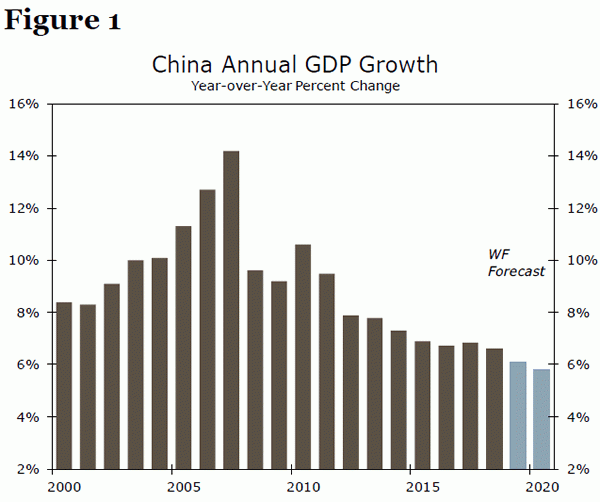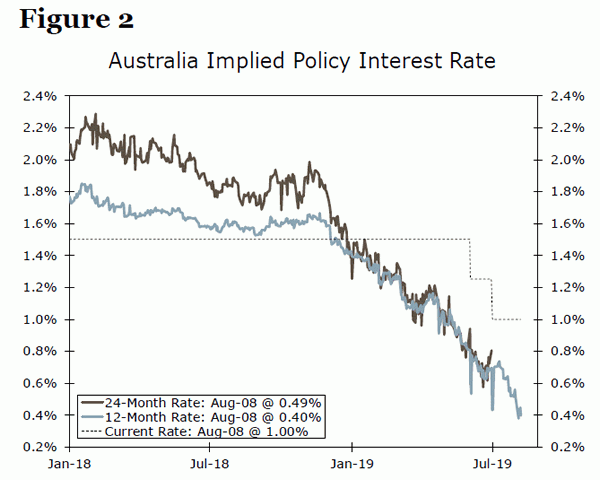Executive Summary
The recent escalation in U.S.-China trade tensions introduces near-term risks to the Australian economy. As of now, we expect President Trump to impose a 10% tariff on the remaining $300B of United States imports from China, which is likely to have a material effect on China’s economy. We now forecast GDP in China to fall below 6% in 2020, and given how dependent Australia is on demand from China, we believe the Reserve Bank of Australia (RBA) will choose to pursue an additional 25 bps cut to its Cash Rate before the end of this year. With the RBA pursuing further monetary easing, as well as the shock to sentiment from a decelerating China, we expect the Australian dollar to depreciate.
Tariff Escalation Likely to Weigh on Australian Currency
While the recent escalation in U.S.-China trade tensions has caused volatility in global markets, we believe this round of tariffs on United States imports from China can also have a material impact on the health of China’s economy. As of now, we fully expect the U.S. administration to implement a 10% tariff on the remaining $300B of United States imports in September, and as a result, we now forecast GDP growth in China to fall below the psychologically important 6% level. Indeed, in our August Monthly Economic Update, we lowered our GDP growth forecast for China to 5.8% for 2020. Given our forecast for a deceleration in China’s economy, we believe the Australian economy is at risk of a near-term slowdown as well. In its 2018 estimate, the IMF noted that 35% of Australia’s exports go to China, which represents significant exposure to decelerating demand from Australia’s primary trading partner.
In addition to having significant exposure to tariffs and a slowdown in China’s economy, domestic imbalances are still prevalent in Australia. Conditions in Australia’s housing sector have been weak for an extended period of time and have not recovered meaningfully yet, while building approvals, a metric used as a benchmark for new housing, has continued to decline. Meanwhile, house prices declined 7.4% year-over-year in Q1-2019, following contractions in the previous three quarters.
As a result of both external and internal headwinds, we expect the RBA to continue easing monetary policy. So far in 2019, the RBA has cut its Cash Rate twice at back-to-back meetings in June and July, and recently signaled a willingness to ease monetary policy further in its latest Statement on Monetary Policy. Given our view for a near-term slowdown in Australia’s economy, as well as recent dovish commentary from policymakers, we believe the RBA will cut rates by an additional 25 bps within the next few months, while also maintaining a dovish bias.
In our view, downside risks to our Australian dollar forecast have materially increased. We believe elevated trade tensions and a more dovish RBA are consistent with short-term weakness in the Australian dollar, and expect the Australian dollar will remain under pressure through the end of 2019.














